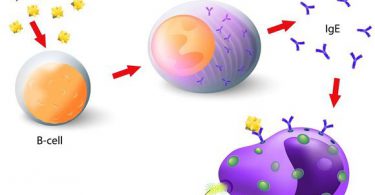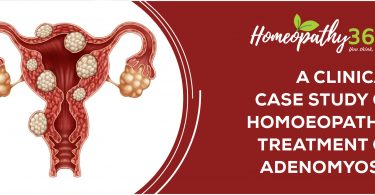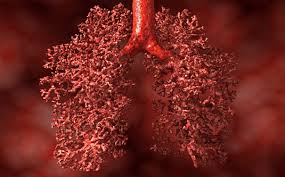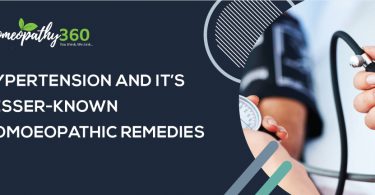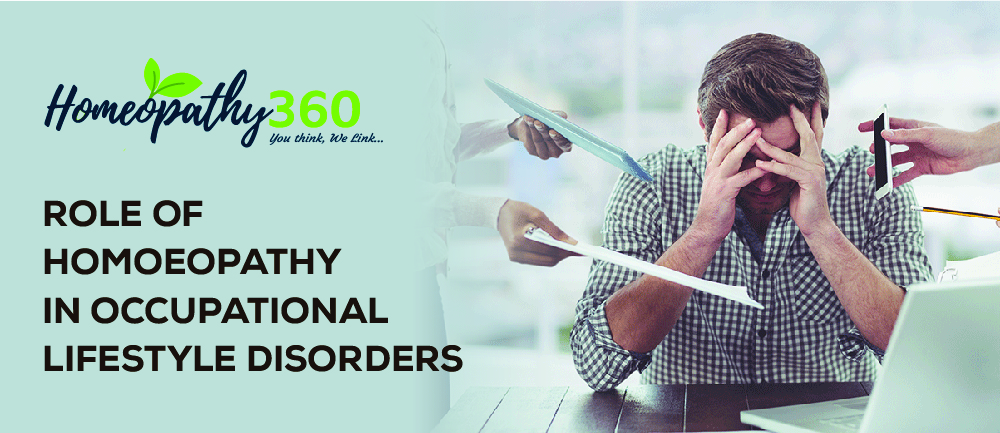
Abstract–
In the last few decades, the incidence of lifestyle disorders has increased tremendously. Day-to-day indisposition or melody is dubbed as lifestyle disorders. In this day and age, people are drawn up to live automated robotic life full of competition, anxiety, insecurity and stress. Humans are exposed to the altered way of living that is unhealthy which may lead to development of disorders termed as lifestyle disorders. It includes wide range of affections but more commonly hypertension, diabetes, obesity, arteriosclerosis, arthritis, stroke, etc. As the main cause for development of it is bad lifestyle, and no conventional medicine can offer complete cure. Whereas homoeopathy helps in treating these afflictions by offering comprehensive approach where not only current symptoms are eradicated but the occurrence of lifestyle disorder can also be prevented or delayed. The case presented here is of back pain primarily because of combination of bad posture, bad eating habits, and working environment requiring long hours of sitting in one place. In addition to peculiar mental state, such external modalities are responsible for development of disorder. Such conditions have become extremely common nowadays where work on computers, laptops, mobile is predisposing for derangements in normal curvature of spine and may lead to permanent nerve damage due to a pressure on nerve including paralysis or permanent physical disability. Hence, it was very important to treat this case so as to prevent further worsening of the condition and create serious consequences. After thorough case taking, the simillimum, Argentum nitricum, was prescribed based on individuality which proved to be very effective. Along with the homoeopathic prescription some lifestyle modifications were suggested in such a way that it won’t disturb the work schedule. When it was implemented and followed regularly, astonishing results were obtained. It showed that homoeopathic treatment, in such cases, adds in recovery by treating the patient as a whole while targeting towards physical, mental, and social well-being that makes homoeopathy a great option in lifestyle disorder. Alongside the healthy lifestyle must be adopted to fight these disorders with proper balanced diet, physical activity and maintaining biological clock. In various occupational lifestyle disorders where maintaining factor is present besides patient’s increased susceptibility, homoeopathic treatment must be administered along with changes in lifestyle for excellent results.
Keywords– Lifestyle disorder, occupational disorder, homoeopathy, cognitive behavioural therapy, lifestyle modification.
Abbreviations- WHO – World Health Organization, LD – lifestyle disorders.
Introduction
Lifestyle disorders are non-communicable diseases like diabetes, hypertension, cardiac disorders, arthritis, etc. (1) killing around 40 million people all over the world each year (2). 68% of working women in age group 21-52 years were found to be afflicted with lifestyle disorders. (1) They are combination of factors including environment and individual personal response, physiological functioning and genetics. As they are mainly linked to lifestyle choices, hence termed as lifestyle disorders. It is main concern nowadays due to it’s complicated aetiology, longer latent period, and functional impairment.
WHO defines lifestyle disorder as an aggregation of personal decisions that can be said to contribute to or cause illness or death.
Lifestyle disorders arise due to overindulging in unhealthy lifestyle leading to self-destruction of physical and mental health. The origin of LD is in unsystematic unhealthy lifestyle which needs to be altered in a healthy way to avert the onset and development of disease via health education. Understanding culture and health practices for implementation of prevention of lifestyle disorders at primary (to prevent disorders in healthy individuals), secondary (in those in whom disease is already developed) or tertiary levels (to reduce the disability already present) level (3). Today, fast and easy technology has made us lazy and we are craving for them. We are inclined to neglect our physical and mental health although we attempt to cope up with demanding lifestyle (2) but in vain. In order to achieve so called success in this competitive world, we become slave of technology which make us neglect our overall health. The increased use of gadgets and reduced physical exercise time with bad posture have become extremely common nowadays where work on computers, laptops, mobile is predisposing for derangements in normal curvature of spine and may lead to permanent nerve damage (due to a pinched nerve) including paralysis or permanent physical disability(4). All the unhealthy habits like alcohol consumption in excess, smoking, junk food consumption, some unknowingly adapted habits like poor sleeping patterns, irregular meal timings, sedentary lifestyle with poor physical activity, etc. has become important modality in development of lifestyle disorders.(5)
Some of the unhealthy habits are conscious unhealthy choices while some are unknowingly adapted habits that facilitates the development of lifestyle disorders.
Risk factors –
*Modifiable behavioral risk factors- The risk factors that can be modified or avoided completely to reduce risk of LD.
Example- Alcohol consumption, bad food habits, wrong body posture, disturbed biological clock, physical inactiveness, etc.
*Non modifiable risk factors- The risk factors that cannot be modified by any intervention.
Example- Age, gender, genetics, race, etc. (6)
Various lifestyle disorders and their probable risk factors-
Obesity– due to unhealthy food (high fat diet, junk food), overeating, lack of physical activity, etc.
Cardiac disorders– due to unhealthy food (salt, high fat diet), tobacco use, heavy alcohol use, age, genetics, etc.
Diabetes- due to unhealthy food (high fat and carbohydrate diet,), lack of physical activity, advanced age, genetics, etc.
Cancer- Smoking, tobacco, poverty, hormone therapies, obesity, exposure to carcinogens, genetics and family history, etc.
Respiratory disorders- smoking, exposure to dust and smoke, chemical environment, etc.
Skeletal disorders- Lack of exercise or physical activity, bad posture, unhealthy diet, obesity, genetics, etc.
Stroke- unhealthy diet, hypertension, clotting disorders, hyperlipidemia, heavy alcohol use, genetics, etc.
If added to poor mental resilience capacity, it leads to disturbed mental state leading to anxiety, discontent, irritability, depression, etc. which leads to the entrance into vicious cycle of adapting unhealthy addictions that temporarily relieves mental and physical uneasiness, but in turn give rise to physical disturbances which increases mental stress.
Even when the symptoms develop in initial stages indicating malfunction in our healthy state, one tends to neglect it for various reasons like inadequate time, money or failure to understand seriousness of it in terms of long term serious complications.
Lifestyle disorders can fall under category psychosomatic as well as local diseases due to presence of maintaining cause (7). In psychosomatic part the derangement occurs first at the mental level and then subsequent display may occur at the physical level whereas in local disease category the cause of disease is external factor giving rise to symptoms(7).The individual’s personal inclinations will predispose them to the manifestation of disease in a particular manner (7,8) since all the individuals exposed to same external factor does not develop the disease on same sphere due to various predispositions determining individual reaction to external adversities. The vulnerability of a particular part, organ or system will lead to localization of disease in particular area which indicates predisposition (7,9). The derangement proceeds from functional to structural level.
Hence, it becomes crucial to find the cause of the illness and treat accordingly as is done in homoeopathy. When external modalities are constant and can’t be changed, but response exertion to these external factors can be changed.
Homoeopathy is based on the natural law of healing- “similia similibus curantur” which means “likes are cured by likes” which is of utmost importance and each person is treated considering his own individuality (7). Hence, person’s individual physical and mental makeup that constitutes his/her personality and makes them unique is understood via case taking.(7) Thorough case taking is most important that considers individual’s personal history, family history, influences of external circumstances on them to which they responded in particular individualistic manner. Later the most similar medicine is administered which brings out, cure in most efficient, rapid, gentle way (7).
Case study
A female patient aged 33 years, working in MNC, visited the clinic on 15-11-2019, with the complaint of back pain since 6-8 months, which has increased from last few months. Patient used to take analgesic, anti-inflammatory medicines that gives temporary relief.
Other complaints:–
Heaviness in the head, > tying hairband. Patient complained of buzzing in the ear with vertigo. Frequently suffered from belching and loud eructations. Trembling in legs also concerned her.
In general, patient felt better in open air.
Family history:-
Mother – Diabetes
Father – Myocardial infarction.
Physical generals:-
Appetite was decreased with desire for sweets. Usually constipated, but diarrhoea before attending event or meeting. Perspiration was increased in armpits which is foul smelling. Patient was suffering from sleeplessness due to thoughts. Menses are profuse and painful. In general, patient felt better in open air.
Local examination:-
Tongue – White coated
Abdomen – Bloated, dull note
Face- withered
Eyes- swollen
Family situation and mental generals:-
Lived in nuclear family and worked in multinational company, that required long hours of working on computer. So could’nt give enough time to family. But still try to manage. Fear of height. Anxious about health. Anxiety better by walking. Stressed and depressed currently due to conflicts at work and in family. Mental affections are more around menstrual period. Dreams of dead people. Impulsive nature. Thoughts of suicide occasionally.
Analysis and evaluation of symptoms (12)-
| Back pain | Characteristic physical particular | (3+) | Psora |
| Heaviness in the head > tying hairband | Characteristic physical qualified | (1+) | Psora |
| Buzzing in the ears with vertigo | Characteristic physical qualified | (2+) | Psora |
| Diarrhoea before event or meeting | Characteristic physical qualified | (3+) | Psora |
| Loud eructations | Characteristic physical particular | (2+) | Psora |
| Trembling in lower limbs | Characteristic physical particular | (2+) | Tubercular |
| Desire sweets | Characteristic general modality | (3+) | Psora |
| Desire open air | Characteristic general modality | (3+) | Psora |
| Menses profuse | Characteristic physical general | (2+) | Sycosis |
| Aggravations around menses | Characteristic general modality | (3+) | Sycosis |
| Dreams of dead people | Characteristic mental expression | (2+) | Psora |
| Fear of Height | Characteristic mental expression | (3+) | Psora |
| Anxiety about health | Characteristic mental quality | (3+) | Psora |
| Anxiety better by walking | Characteristic mental qualified | (2+) | Psora |
| Impulsive | Characteristic mental quality | (2+) | Syphilis |
| Weeps easily | Characteristic mental quality | (2+) | Psora |
Totality of symptoms–
1. Mind- dreams of dead people- characteristic mental expression
2. Mind-fear of height- characteristic mental expression
3. Mind-anxiety about health- characteristic mental quality
4. Mind-anxiety better by walking- characteristic mental qualified
5. Mind-impulsive- characteristic mental quality
6. Mind-weeps easily- characteristic mental quality
7. Generals-desire open air- characteristic general modality
8. Stomach-desire sweets- characteristic general modality
9. Stomach-loud eructations- characteristic physical particular
10. Female-aggravations around menses- characteristic general modality
11. Female-menses profuse- characteristic physical general
12. Ear-buzzing in the ears with vertigo- characteristic physical qualified
13. Abdomen-diarrhoea before event or meeting- characteristic physical qualified
14. Extremities-trembling in lower limbs- characteristic physical particular
15. Back- pain- characteristic physical particular
16. Head-heaviness in the head > tying hairband

Prescription:-
Argentum Nitricum 1M/1 dose
The remedy was selected on the basis of repertorial totality of symptoms and by referring to materia medica (10, 11). There was predominance on mental level. Pt extremely anxious and compelled to walk, anxiety before the events, even causing diarrhoea before event, impulsiveness, the characteristic mental expressions of fear and dreams, characteristic physical expression especially gaseous distension and loud eructations are consequence of nervous state of mind. Also, trembling of lower limbs and backache shows nervous affections on spinal level. Even characteristic desires for open air and sweets and in general worsening around menses. Hence, considering these predominant mentals as a source of current physical manifestations, Argentum nitricum as described in materia medica, Argentum nitricum was prescribed in higher potency 1M/1 dose. For occupational maintaining factor, lifestyle modifications were suggested like priority decision, regular exercise, sitting posture, dietary changes, and cognitive behavioural therapy.
Follow up:-
| Date | Changes in symptoms | Prescription |
| 22-11-2019 | Patient felt better with respect to pain in back and gaseous complaint | Placebo for 15 days |
| 04-12-2019 | Mild pain is still there. Sleep – better | Placebo for 15 days |
| 19-12-2019 | Pain started again since last 3-4 days Marked improvement in other complaints | Placebo for 15 days |
| 25-01-2020 | continued to feel better | Placebo for 15 days |
| 22-02-2020 | Better wrt to all complaints | Placebo for 15 days |
| 20-03-2020 | Patient showed improvement in physical complaints and mental state also improved significantly | Placebo for 15 days |
Patient reported on phone later of doing well in spite of increased work load due to lockdown.
Conclusion
The back pain was a consequence of bad posture and long sitting hours and worsened by poor diet and irregular meal timings. The mental stress at home and work due to disturbed work-life balance was the contributory factor. The predisposition of patient to bend under stress reflecting her individual response structure was at the root of the manifestations. The Homoeopathic medicine selected on basis of individualization treated the condition successfully. After initial relief of symptoms patient adapted lifestyle modifications as suggested which extended the support in managing the external modalities that were adding fuel to the condition. There is no specific remedy for a particular disease in homoeopathy. The real specific is a remedy which is selected as per mental, miasmatic, physical, causative picture at all levels constituting real portrait of the disease. It is recommended to do medicinal intervention at an early stage of the disease when prognosis is favourable. The most similar remedy, i.e. simillimum along with cognitive behavioral therapy (CBT) and lifestyle modifications helped the patient tremendously. Homoeopathy helped her strengthen the immune system and restored physical, mental and emotional well-being. Later continuing same profession, patient continued to live healthy life proving that the above measures and homoeopathy prevented further development of symptoms in serious disease.
References
1.Sharma M, Majumdar PK: Occupational lifestyle diseases: An emerging issue: available in Indian journal of occupational and environmental medicine: on www.ncbi.nih.gov
2.Healthgrades editorial staff: Lower back pain 2018: available on healthgrades.com
3.Hahnemann S: Organon of Homoeopathic Medicine: 6th edition:1922: aphorisms2,7,26-30,31,77,83,150,210-230
4.Tubbish SA, Lifestyle diseases: consequences, characteristics, causes and control: 2017: available on medcraveonline.com
5.Kumar R, Kumar M:Guide to Prevention of Lifestyle Diseases:2004
6.Holt McDougal Lifetime Health Chapter 14 Resource File: Lifestyle Diseases; 2004
7.Sharma S, Anand T,et al:Prevelance of modifiable and non-modifiable risk factors and lifestyle disorders among health care professionals
8.Garland D, Riggs E, Brown S: what factors are associated with resilient outcomes in children exposed to social adversity: available on www.ncbi.nih.gov
9.Yi JP, Vitaliano PP, Weingner K: The role of resilience on psychological adjustment and physical health in patients with diabetes: available in British journal of health psychology: on www.ncbi.nih.gov
10. Boericke W: Pocket manual of Materia Medica:9th edition:2004:72-75
11.Kent JT: Lectures on Homoeopathic Materia Medica: 2007
12.Roberts HA: The Principles and Art of Cure by Homoeopathy:3rd edition:119-121 pg
About Author:
Dr Supriya S. Naik
B.H.M.S., M.D (HOM)
Professor in Virar Homoeopathic Medical College, Virar.
Ex-faculty (PG) Sonajirao Ksirsagar Homoeopathic medical college, Beed,
Ex-faculty, Armeit Biz School (MBA-HCA), Thane.
Founder of lifestyle management program -ProHealthSpace


